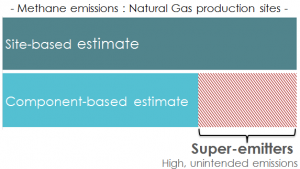Food waste, guilt and the millennial mom: how companies can help
By Jenny Ahlen
 I spend a lot of time these days thinking about food waste.
I spend a lot of time these days thinking about food waste.
Why? First, I’m the mother of a toddler who oscillates between being a bottomless pit, easily cleaning her plate, to being a picky eater who only takes a couple of bites before the bulk of her meal ends up in the trash.
Second, I’m married to a chef who, because he’s a smart businessman, runs his kitchen with the precision of a comptroller: wasted food means lost profit, so every scrap of food is utilized wherever possible.
Finally, I interface almost daily with Walmart, the world’s largest grocer. Walmart recently pledged to root out 1 gigaton of greenhouse gas reductions from its global supply chain, and I’m certain that food waste will play an integral part in reaching that goal.
But before you conclude that I’m an outlier—some sort of obsessive, “food waste weirdo”— a recent study shows that I’m not the only one struggling with this issue:
- American’s waste approximately 80 billion lbs. of food each year;
- 77.22% of those surveyed feel guilty about throwing all that food away.
Now we all know that just because one feels guilty about something doesn’t mean one’s behavior will change. Cost, however, is a frequent driver of behavior, so consider these numbers:
- Only 42.1% of people surveyed understand that wasted food is also money lost;
- Food waste actually represents $1,350 to $2,275 lost each year to family of four.
In other words, 2.5-4% of the 2015 US median household income is being thrown away! That’s bad news for our wallets—and our planet (NRDC estimates that food rotting in landfills accounts for 16% of U.S. methane emissions).
So it’s a no-brainer that wasting food serves no one’s interests. What’s not so clear is: what can be done about it?
A business opportunity… with a coveted consumer
This is where I see a real opportunity for grocers—like Walmart—and the food companies that fill their shelves. For the most part, these companies are talking non-stop these days about how to win over the most coveted customer of all, the “millennial mom”.
Inviting millennial moms to be partners on eliminating food waste could be the perfect strategy. They  are young (meaning they have years of brand loyalty ahead of them), cost-conscious and environmentally engaged; saving them money while alleviating their food waste guilt is a clear win-win.
are young (meaning they have years of brand loyalty ahead of them), cost-conscious and environmentally engaged; saving them money while alleviating their food waste guilt is a clear win-win.
I’m not saying this will be easy; that same study reveals that real barriers exist:
- 59.3% of consumers surveyed believe food waste is necessary to make sure meals taste good ;
- 51.2% of those same consumers think it would be difficult to reduce household food waste further.
However, while conceding that it’s difficult (if not downright un-wise) to portray millennial moms as a monolithic group, marketing profiles of these women consistently portray them as, a.) hungry for information about products; and b.) willing to take action on issues… but only if roadblocks or impediments have been removed.
So, grocers and food companies, how can you burnish your brand with millennial moms while making a real dent in food waste?
Step number 1: engage and educate
Run marketing campaigns, both in-store and out, that will inform these coveted customers on:
- Proper handling and storage of their food to minimize spoilage; and
- How to fully utilize their food purchases. In other words, teach them to think like my husband, the chef, so they can make use of scraps and leftovers.
Step number 2: make it easy
Design and implement initiatives that make for fun, easy adoption:
- Clarify date labeling so that perfectly good food isn’t perceived as bad. The USDA just requested that companies switch to “best if used by” language to give consumers more accurate guidance.
- Suggest meals that enable moms to buy just what they need—and use it up. There’s a real business opportunity here: did you know that, as of 4 pm each day, 80% of mom’s don’t know what’s for dinner that night? Suggesting recipes that will be totally consumed will make her life easier!
- Inspire composting (and discount composters)… their garden will thrive because of you! Or help make curbside composting possible like in Boulder, Seattle and San Francisco.
- Be creative… people love to compete! Only 13.5% think that their household wastes more than their average neighbor (study). Help people understand that they may in fact be wasting way more food and money than their friends, family, and neighbors to motivate them to do something about it.
In the meantime, I will carry on, hopeful that while my daughter learns to clean her plate, an array of giant food companies and grocers will take up the mantle of tackling food waste on a massive scale.





 The late California historian Kevin Starr once wrote, “California had long since become one of the prisms through which the American people, for better and for worse, could glimpse their future.” These words have never felt truer. Just ask
The late California historian Kevin Starr once wrote, “California had long since become one of the prisms through which the American people, for better and for worse, could glimpse their future.” These words have never felt truer. Just ask 
 President Trump’s
President Trump’s 
